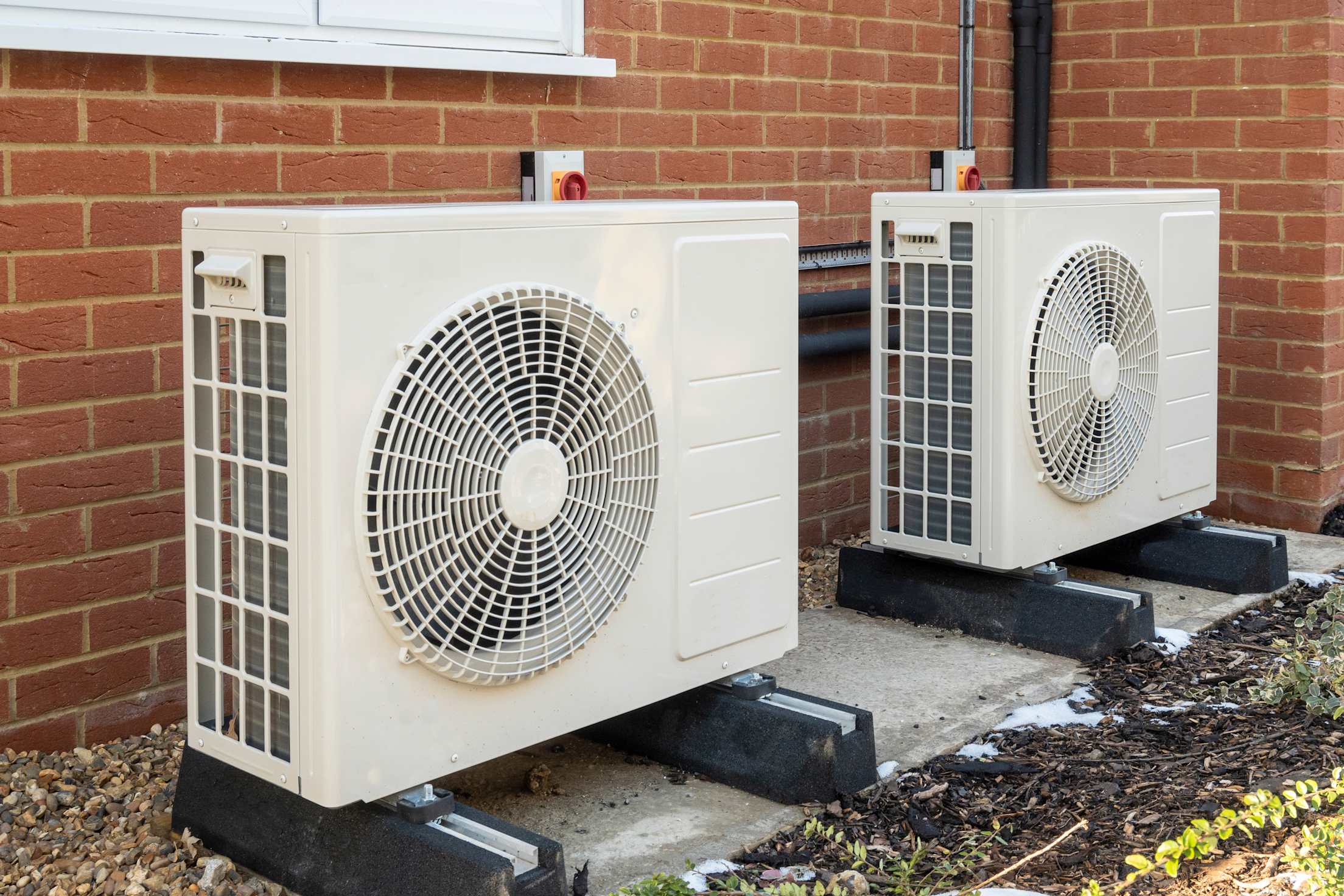
Will a Heat Pump Save You Money on Heating and Cooling?
Rebates and incentives are available to cut down on costs for these highly efficient and cost-saving devices.

Ever climbing heating costs and the increase in frequency of hot days across the West are leading many people to consider replacing their home’s heating and cooling system with a heat pump. And for good reason.
Once installed, heat pumps are the cheapest and most efficient way to heat or cool a home. Experts also tout the technology as one of the best ways to reduce your carbon footprint without sacrificing comfort.
Thinking of installing a heat pump? Here’s what you need to know, from rebates and incentives to finding the right installer.
How Heat Pumps Work
Put simply, heat pumps transfer warmth between the inside and outside to cool or heat your home as needed, explains Jennifer Green, manager of customer programs at MCE, which provides electricity service to more than 1.5 million residents and businesses across four Bay Area counties.
Unlike a furnace, which burns gas or oil or uses electricity to generate heat, a heat pump transfers the heat from air (or less commonly the ground or a nearby water source) outside into your home. It does the reverse in the summer to bring cool air inside.
These extremely efficient devices are powered by electricity and offer a great alternative to natural gas or electric furnaces and air conditioners.

Types of Heat Pumps
The most common type today is an air source heat pump. These transfer the heat from the air and include:
- Ducted heat pumps. With this system, you can use your home’s existing ductwork and vents for the heat pump, or install new ductwork throughout.
- Mini split or ductless heat pump. This option is ideal if you don’t have a ducted HVAC system already in place. With it, you’ll get an outdoor and indoor air unit(s), as well as a conduit that links the two. Instead of utilizing large ducting, a three-inch hole will be made in an exterior wall to connect the two units. Many systems allow you to attach multiple indoor units to one exterior heat pump so you can put the system into multiple rooms.
Geothermal heat pumps are less common, Green notes. These work by transferring heat from the air or ground near your home, according to the Office of Energy Efficiency & Renewable Energy. They’re pricier to install but cheaper to run.
Environmental and Financial Benefits
Just how efficient are heat pumps? “When properly installed, an air-source heat pump can deliver up to three times more heat energy to a home than the electrical energy it consumes,” according to the Office of Energy Efficiency & Renewable Energy. Furnaces and boilers, on the other hand, are unable to use all of the available energy from combustion to heat the air, which means heat pumps can be three times as efficient depending on location and use.
Instead of relying on fossil fuels, heat pumps use renewable thermal energy, which means that using them can help reduce emissions, even if your electricity is still generated with some fossil fuels, according to a 2022 article in Nature.
And then there’s the cost-savings to consider. Switching to a heat pump can lead to annual savings of about $459 for people with electric resistance heaters and $948 for oil heating systems, according to the Northeast Energy Efficiency Partnerships.
Analysis published in Environmental Research Letters found that 32 percent of homes in the U.S. would experience savings from installing a heating pump, while far more (70 percent) would reduce energy emissions by doing so.
Incentives and Rebates for Installing a Heat Pump
While heat pumps lead to lower annual bills, installation costs range from $4,193 and $7,598, according to Angi. Factors such as the size and type of heat pump lead to the wide range in costs, as well as where you live.
The price for purchase and installation, however, can often be offset by federal tax credits and state rebates. The Inflation Reduction Act (IRA) extended residential energy efficiency tax credits through 2023, which includes tax credits of up to 26 percent off for products meeting Energy Star standards.
For households with low and moderate incomes, the High-Efficiency Electric Home Rebate Act (HEEHRA), which is also part of the IRA, provides rebates for electrification project costs, For low income households, the entire project is covered up to $14,000, while for moderate-income households, half of the costs are covered with the same $14,000 ceiling.
State rebate programs can also cut down on the initial expense. In Nevada, for instance, there’s up to a $2,400 incentive for an air source heat pump replacement and a $600 discount for purchasing an electric heat pump water heater.

What to Consider Before Installation
The energy- and cost-savings of heat pumps are appealing, but keep these factors in mind before making a purchase:
It’s not necessarily wise to junk a working system. If your current system is functioning well and isn’t near the end of its lifespan, it’s likely “environmentally wasteful” to chuck it, Green says.
That said, emergency replacements are hard. If your current system is approaching the end of its lifespan, it may make sense to make the move sooner than later to take advantage of current incentives and avoid an expensive and time consuming emergency replacement when your existing system fails.
Heat pumps are the future. California plans to ban the sale of gas furnaces and heaters by 2030, and some localities go further. In Marin County, for instance, all new construction must be all-electric. “We're going to phase out the [non-electric] infrastructure,” Green points out. Sticking with gas heat will mean being on a system that will grow more challenging to maintain and repair over time.
You may find it more comfortable. If your home is prone to different heat pockets, you may appreciate a heat pump, points out Jenna Tenney, a senior communications manager with MCE. In her home, for instance, her existing heat system works and isn’t terribly expensive to run, but temperatures vary throughout—the bedroom hits 70 degrees, but the kitchen remains a somewhat chilly 65 degrees. A heat pump can help with that by allowing you to control the temperature independently in each room, and the improved comfort matters too.
How to Select and Install a Heat Pump
A qualified contractor can help steer you through the process of choosing the right heat pump for your home and installing it. Look for a bonded and insured contractor with experience with heat pumps (ideally someone that comes recommended by friends or neighbors), and get multiple quotes to compare.
When shopping for a heat pump, look at two performance ratings: the heating season performance factor (HSPF), which shows the heating efficiency of the unit, and the seasonal energy efficiency ratio (SEER), which is a measurement of the unit’s cooling efficiency. Consider your climate when weighing these two ratings—if temperatures are high where you live, the SEER rating is more important than the HSPF. You’ll also want to consider the size of your space, as well as how well insulated it is.